Romanian tech tree for World of Tanks proposal by PikPikker
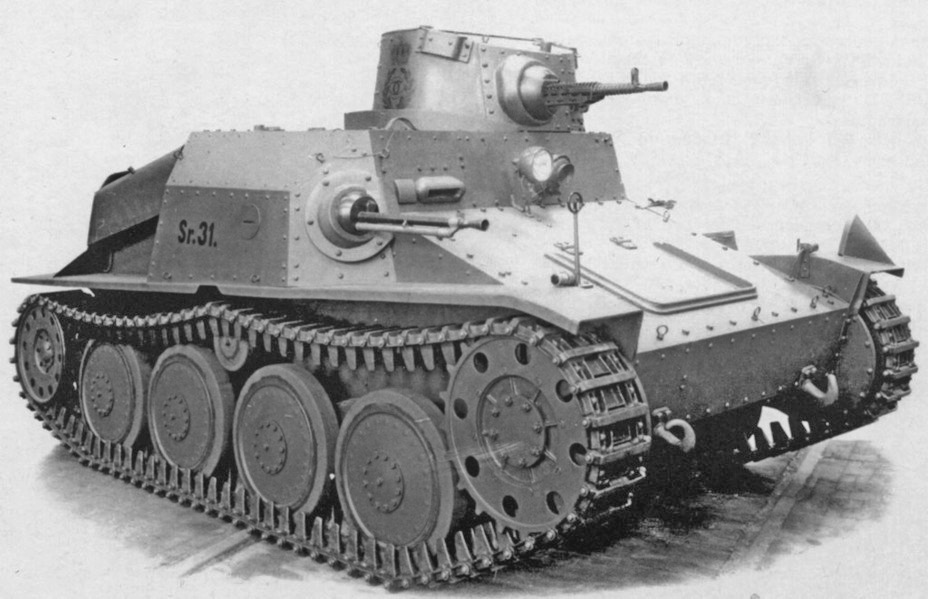
- 6/6 HP
- 23/33 mm
- 12 mm
- 55 hp
- 65 hp
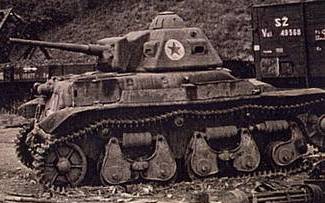

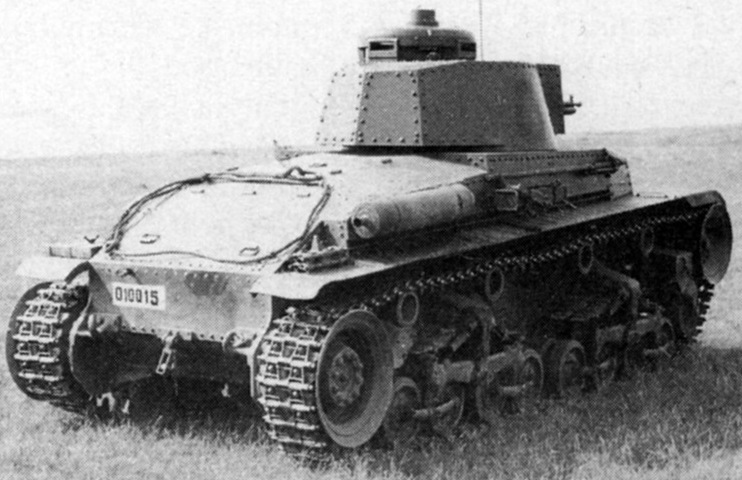
The Romanians signed a contract for 36 AH-IV-R, as they were designated by ČKD, on 14 August 1936, including one prototype to be delivered in two months and the entire order in seven months. These deadlines were unable to be met as the Romanians demanded many changes, which all had to be made on the production line because ČKD had initiated production of the entire order before the prototype was accepted. The first ten tankettes off the production line were sent to Romania in October 1937 to participate in the autumn maneuvers when they made a favorable impression before being returned to the factory. The production run was completed the next month, but the Romanians refused to accept them as they didn't conform to the specifications. The required modifications took until April 1938 to perform, but another evaluation was required under summer conditions and they weren't formally accepted until August 1938. Nicolae Malaxa bought a license to produce the R-1 as the AH-IV-R was known in Romanian service, in September 1938, but irregularities and disputes over payment delayed the transfer of the production drawings until October 1939. His factory built one prototype, mostly from R-1 spare parts, but never began production.
The R-1s were assigned to the cavalry brigades, two platoons of two or three tankettes apiece. All eighteen belonging to the Cavalry Corps were grouped into the ad-hoc "Korne Mechanized Detachment" during the opening stages of Operation Barbarossa, but all were out of commission by 1 October. Twenty-nine of the original thirty-five were allocated to the six cavalry divisions (redesignated from brigades on 25 March 1942) that successfully participated in the German 1942 summer offensive, codenamed Case Blue. The four R-1s belonging to the 1st Cavalry Division's 1st Mechanized Squadron had to be set on fire as no fuel was available for them when the division was encircled outside of Stalingrad in November 1942 as part of the Soviet Operation Uranus counter-offensive. The 5th and 8th Cavalry Divisions had lost at least five R-1s during the same time trying to solidify the crumbling Axis defenses after the Soviet breakthroughs. Both divisions supported the Germans as they attempted to relieve the Stalingrad Pocket in Operation Winter Storm, but were shattered when the Soviets counter-attacked the unsuccessful relief effort in late December 1942. Two other cavalry divisions remained in the Kuban bridgehead after the German withdrawal from the Caucasus, but their two remaining serviceable R-1s were withdrawn back to Romania during the spring of 1943 as obsolete. On 30 August 1943 only thirteen R-1s were available, all assigned to the Cavalry Training Center, although this increased by one on inventories dated 25 March and 19 July 1944. Nothing is known of any action involving R-1s during 1944, but eleven reinforced the 2nd Armored Regiment in Czechoslovakia when it reached the front on 26 March 1945. By 24 April the regiment only had one R-1 available, but none were reported as available after that date.

- 47/47/62 HP
- 51/84/23 mm
- 47/47/62 HP
- 65/95/23 mm
- 55 hp

A small tank destroyer for use by Romania during World War II. It was designed on the 22nd of November 1943 at the request of the Romanian General Staff. Fourteen AH-IV tankettes were to be rearmed with soviet 45 mm AT guns. Although this vehicle was designed to be used only for security duties, the project was cancelled because it was eventually regarded as a waste of badly needed resources.

- 40/40/45 HP
- 52/74/18 mm
- 25/16/16 mm
- 120 hp
Romania was the one of the countries who used Czechoslovak LT vz. 35 tanks. Romania ordered 126 of the tanks on 14 August 1936 as the R-2 and received the first 15, which had been diverted from the Czech order, in April–May 1937 to display in a parade. The last tanks were delivered on 22 February 1939. About a half of the tanks, which had another turret rear (as on the photo) and cemented armor, were designated as R-2c. All these tanks were in use until 1944-45.

- 40/40/45 HP
- 52/74/18 mm
- 15/15/15 mm
- 90 hp
On July 22, 1942, a proposal was suggested, it would exchange the armament of the captured T-26s, even though sufficient amount of ammunition for the 45mm 20K was available. A need to “unify” the guns used by the Romanian army was being felt. The proposal referred to a “Škoda” gun and a “ZB” machine gun. No specifics were given to what Škoda gun or ZB machine gun would’ve been used. At this time, Romania almost exclusively operated Škoda field guns, which were large caliber artillery guns. The only logical alternative is that they meant the 3.7 cm A3 gun which was also mounted on the R-2 tanks. The T-26 modification might’ve been a plan to salvage the 3.7 cm gun from destroyed R-2s. It’s also possible that the gun might’ve been part of a failed armament deal between Škoda or Germany and Romania being discussed around the time of this T-26 modification. However, there is no proof at all for this and it’s purely speculation.
This proposal never materialized. The efforts of converting these vehicles, getting them into service and keeping them properly maintained were probably seen as too big for the small number of obsolete tanks it would have added to the Romanian tank force. The T-26s were sent to various Romanian units, where they were used for training. Later on, they were scrapped and their armor was used in the construction of the TACAM T-60 or TACAM R-2, while the guns were used for the Vânătorul de Care R-35 conversions.

- 60/60/75 HP
- 62/115/24 mm
- 30/25/20 mm
- 30/25/20 mm
- 250 hp
In the summer of 1940, Romania's traditional interwar arms delivery partners, France and Czechoslovakia , were under German occupation. Romania's armored forces were equipped with 126 light R-2 tanks, 75 Renault R-35 tanks (41 of which were interned Polish tanks), 35 R-1 tankettes and 75 obsolete Renault FT tanks. As the country was basically surrounded by hostile neighbours from all sides and the Renault R-35 tank deliveries were stopped, the Romanian Army sought to buy a medium tank.
The chosen design was the Czechoslovak S-II-c prototype, the successor of the LT vz. 35 light tank. The Romanian trials and field testing of the tank started in late 1939. This choice came naturally, as Romanian troops were already familiar with its predecessor. The prototype was later designated by Škoda Works as the T-21 medium tank. Nazi Germany refused to deliver tanks to Romania because the country was not yet part of the Axis.
In August 1940, the talks were resumed, as Germany sold the license of an improved variant of the T-21 tank to Hungary. The Hungarian engineers improved the two T-22 prototypes sent to them by Germany and built the tank under the 40M Turán I designation. Romania, now part of the Axis, placed an order for 216 tanks in January 1941, but Germany couldn't deliver the tanks because of the limited resources. The delivery would have disrupted the production of other tanks.
In June 1941, Romania ordered 287 R-3 tanks from Skoda, but Germany only delivered 26 worn-out Panzer 35(t)s. Rebuffed repeatedly, Romania eventually offered to build the tanks locally, but the country lacked the industrial resources to produce medium tanks and the project was eventually canceled.
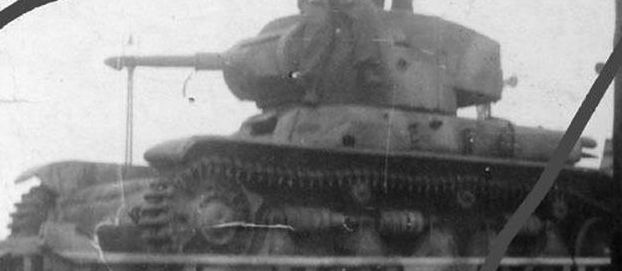
- 47/47/62 HP
- 51/84/23 mm
- 15/15/15 mm
- 82 hp
There may be a single photograph of the 2nd Armored Regiment’s prototype. The recently discovered R35/T-26 (round turret version, not the similar conical turreted version, which is likely a German field conversion), may be this vehicle. In the only known photograph, two soldiers (of unknown nationality) are seen with the vehicle on a train. The vehicle appears to have a sort of camouflage on it, although the image is too unclear to tell for certain. While this vehicle may, indeed, be a second German field conversion, it is possible, due to the above information, that this vehicle is the 2nd Armored Regiment’s prototype.

- 420 HP
- 45 mm
- 70 hp
The Vânătorul de Care Mareșal was the most ambitious Romanian tank effort of the Second World War. While the armored units of the Romanian Army perceived a lack of effective anti-tank weaponry even during the initial attack against the Soviet Union, the problem became more acute after they first encountered Soviet T-34 and KV-1 tanks in 1942.As a result, Romanian Army leadership proposed the development of a light tank destroyer manufactured in Romania. A development team consisting of engineers Captain Gheorghe Sîmbotin and Major Nicolae Anghel were tasked with designing such a vehicle appropriate for service on the Eastern Front out of available parts.
In February 1944, Romania managed to secure contracts with suppliers in France, Switzerland, and Sweden for tank parts. The Germans also offered to assist Romania by deploying specialists to the Rogifer Works and supplying necessary components including gun optics, armored plates, and radio sets. The Army, however, planned to manufacture all components in Romania within one year of starting production. Mass production, however, was never started.
Their solution was a testing program aimed at adapting an existing light tank to fire a heavier gun. The Soviet T-60 light tank was chosen because a significant number had been captured from the Red Army; similarly, availability of captured stocks influenced their choice of a Soviet 122mm howitzer as the vehicle's main armament.In order to be effective against enemy armor, the howitzer was intended to fire shaped charge rounds. The turret was removed and four 10-20mm thick steel plates were used to construct an armored case-mate onto the hull. The initial prototype was built in Bucharest at the Rogifer works (former Malaxa factory, currently FAUR) with the assistance of engineers Constantin Ghiulai (designer of the TACAM R-2) and Radu Veres (director of Rogifer).
The initial prototype, christened Mareşal was designated M-00 and began testing at the Sudiți firing range outside of Slobozia on July 30, 1943. Fears that the tank would be toppled by the considerable recoil of the howitzer proved unfounded; however, other problems were noted mostly involving the gun mounting. Testing was considered successful and a committee to supervise the Mareşal project was created by orders of Ion Antonescu's cabinet.
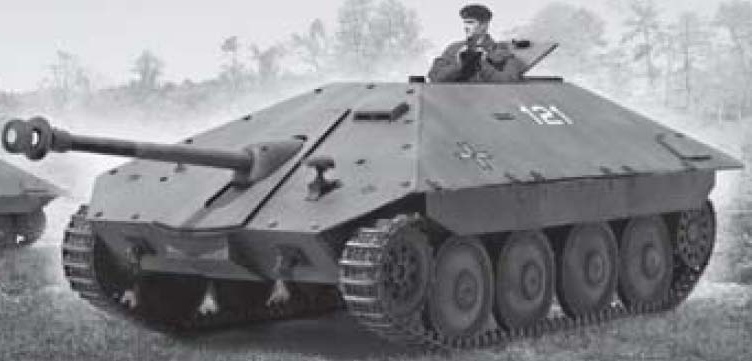
- 115/115/175 HP
- 120/170/38 mm
- 120 hp
The Vânătorul de Care Mareșal was the most ambitious Romanian tank effort of the Second World War. While the armored units of the Romanian Army perceived a lack of effective anti-tank weaponry even during the initial attack against the Soviet Union, the problem became more acute after they first encountered Soviet T-34 and KV-1 tanks in 1942.As a result, Romanian Army leadership proposed the development of a light tank destroyer manufactured in Romania. A development team consisting of engineers Captain Gheorghe Sîmbotin and Major Nicolae Anghel were tasked with designing such a vehicle appropriate for service on the Eastern Front out of available parts.
In February 1944, Romania managed to secure contracts with suppliers in France, Switzerland, and Sweden for tank parts. The Germans also offered to assist Romania by deploying specialists to the Rogifer Works and supplying necessary components including gun optics, armored plates, and radio sets. The Army, however, planned to manufacture all components in Romania within one year of starting production. Mass production, however, was never started.
The final series of prototypes, M-05 and M-06, were built in the spring of 1944 and gave up on the T-60 chassis and hull in favor of a new Romanian design. M-05 was completed in May 1944 and tested that same month. A June 1944 demonstration with Ion Antonescu in attendance saw M-05 competing against a StuG IIIG as well as a towed Resita Model 1943 anti-tank gun. The Maresal fared very well in those tests. From July 24 through August 31, 1944, M-06 went on to a series of difficult trials simulating conditions on the front lines. During these tests the gun mounting gave way, putting further use of the vehicle on hold until August 31. M-05 finisted testing on September 21 while M-06 remained uncompleted.
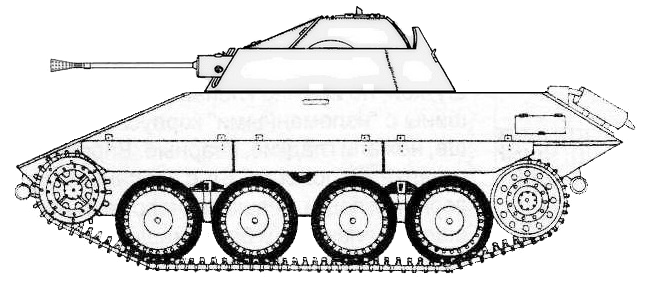
- 40/40/45 HP
- 60/105/18 mm
- 8 shots
- up to 250 rpm
- ?
- 120 hp
The Vânătorul de Care Mareșal was the most ambitious Romanian tank effort of the Second World War. While the armored units of the Romanian Army perceived a lack of effective anti-tank weaponry even during the initial attack against the Soviet Union, the problem became more acute after they first encountered Soviet T-34 and KV-1 tanks in 1942.As a result, Romanian Army leadership proposed the development of a light tank destroyer manufactured in Romania. A development team consisting of engineers Captain Gheorghe Sîmbotin and Major Nicolae Anghel were tasked with designing such a vehicle appropriate for service on the Eastern Front out of available parts.
In February 1944, Romania managed to secure contracts with suppliers in France, Switzerland, and Sweden for tank parts. The Germans also offered to assist Romania by deploying specialists to the Rogifer Works and supplying necessary components including gun optics, armored plates, and radio sets. The Army, however, planned to manufacture all components in Romania within one year of starting production. Mass production, however, was never started.
German plan to buy the vehicle and arm it with two (twin) 37 mm anti-aircraft guns. Nothing else is known about this plan.

- 110/110/175 HP
- 103/139/38 mm
- 110/110/175 HP
- 110/158/38 mm
- 110/110/175 HP
- 125/170/38 mm
- 50/30/30 mm
- 50 mm
- 300 hp
After the disastrous (from a Romanian point of view) Soviet offensive at Stalingrad, it was obvious that Romania was lacking a powerful tank, in order to counter the Soviet T 34's. It was decided to somehow upgrade the existing tanks or to modify an existing German, Czech or French project in order to create a powerful and easy to build tank. This materialised as the TACAM series.It might have been proposed to modify the plans for the R-3 in order to create a modern tank armed with the German Pak 40 or with the brand new Romanian Resita 75 mm gun. In order to do this, a new turret was necessary and some extra armour. It would have been impossible to do that, without affecting the suspension, so it was thought to use spaced armour (as on Pz IV H or stug IV). But the tank didn't left the project stage.


- 110/110/156 HP
- 86/102/38 mm
- 400/320 HP
- 50/110 mm
- 450/370 HP
- 61/140 mm
- 45/45/45 mm
- ? mm
- 400 hp
- 500 hp
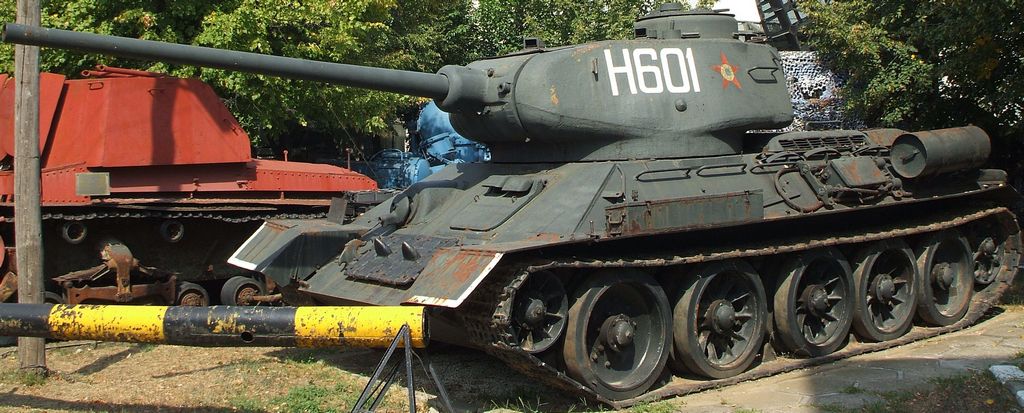
Two T-34s were captured by Romania from the Soviets. One weighing 26 tons and the other weighing 33 tons (possibly referring to the T-34E STZ variant). It was proposed that an unnamed 120 mm (or 122 mm) and 150 mm gun were to be mounted on a different turret on the two T-34s. The proposal was later scrapped due to Romania’s inability to produce the necessary parts to handle the recoil of these large guns.

- 420 HP
- 45 mm
- 120 hp
The Vânătorul de Care Mareșal was the most ambitious Romanian tank effort of the Second World War. While the armored units of the Romanian Army perceived a lack of effective anti-tank weaponry even during the initial attack against the Soviet Union, the problem became more acute after they first encountered Soviet T-34 and KV-1 tanks in 1942.As a result, Romanian Army leadership proposed the development of a light tank destroyer manufactured in Romania. A development team consisting of engineers Captain Gheorghe Sîmbotin and Major Nicolae Anghel were tasked with designing such a vehicle appropriate for service on the Eastern Front out of available parts.
In February 1944, Romania managed to secure contracts with suppliers in France, Switzerland, and Sweden for tank parts. The Germans also offered to assist Romania by deploying specialists to the Rogifer Works and supplying necessary components including gun optics, armored plates, and radio sets. The Army, however, planned to manufacture all components in Romania within one year of starting production. Mass production, however, was never started.
M-02 and M-03 were tested at Sudiți in front of Marshal Antonescu on October 23, 1943, the same day as the 75mm Resița anti-tank gun. They both used a reinforced a bit larger T-60 chassis.
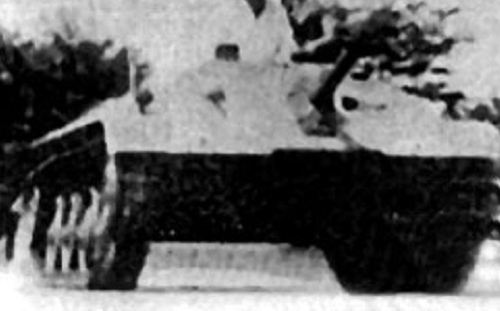
- 420 HP
- 45 mm
- 110/110/175 HP
- 125/170/38 mm
- 120 hp
The Vânătorul de Care Mareșal was the most ambitious Romanian tank effort of the Second World War. While the armored units of the Romanian Army perceived a lack of effective anti-tank weaponry even during the initial attack against the Soviet Union, the problem became more acute after they first encountered Soviet T-34 and KV-1 tanks in 1942.As a result, Romanian Army leadership proposed the development of a light tank destroyer manufactured in Romania. A development team consisting of engineers Captain Gheorghe Sîmbotin and Major Nicolae Anghel were tasked with designing such a vehicle appropriate for service on the Eastern Front out of available parts.
In February 1944, Romania managed to secure contracts with suppliers in France, Switzerland, and Sweden for tank parts. The Germans also offered to assist Romania by deploying specialists to the Rogifer Works and supplying necessary components including gun optics, armored plates, and radio sets. The Army, however, planned to manufacture all components in Romania within one year of starting production. Mass production, however, was never started.
M-01, which was tested with M-02, and M-03 at Sudiți in front of Marshal Antonescu on October 23, 1943, had a reinforced T-60 chassis as well and 122 mm howitzer.
The next prototype, M-04 (T-60 chassis), incorporated significant changes and was completed in January 1944. In February, the M-04 prototype was sent to Sudiți for evaluation. Again, concerns were brought up about the vehicle’s ability to withstand the gun’s recoil. Testing however showed the main gun could be safely fired. Two German representatives observed the testing of M-04 and were impressed by its maneuverability.


- 110/110/175 HP
- 125/170/38 mm
- 135/135/175 HP
- 155/205/38 mm
- 120 hp

The Vânătorul de Care Mareșal was the most ambitious Romanian tank effort of the Second World War. While the armored units of the Romanian Army perceived a lack of effective anti-tank weaponry even during the initial attack against the Soviet Union, the problem became more acute after they first encountered Soviet T-34 and KV-1 tanks in 1942.As a result, Romanian Army leadership proposed the development of a light tank destroyer manufactured in Romania. A development team consisting of engineers Captain Gheorghe Sîmbotin and Major Nicolae Anghel were tasked with designing such a vehicle appropriate for service on the Eastern Front out of available parts.
In February 1944, Romania managed to secure contracts with suppliers in France, Switzerland, and Sweden for tank parts. The Germans also offered to assist Romania by deploying specialists to the Rogifer Works and supplying necessary components including gun optics, armored plates, and radio sets. The Army, however, planned to manufacture all components in Romania within one year of starting production. Mass production, however, was never started.
The final series of prototypes, M-05 and M-06, were built in the spring of 1944 and gave up on the T-60 chassis and hull in favor of a new Romanian design. The latter stages on testing involving M-06 occurred in the immediate aftermath of King Michael’s Coup in August and September 1944. Romania and the Allies concluded an armistice on September 12th which gave wide-ranging powers to the Allied Control Commission in which the Soviets played a dominant role. Invoking the terms of the Armistice, the Soviets confiscated the Mareşal prototypes and all related materials on October 26. The history of the Mareşal after this point is unknown.


- 465/370 HP
- 61/140 mm
- 135/135/175 HP
- 165/215/38 mm
- 650/650/900 HP
- 110/136/86 mm
- 120 hp

The Vânătorul de Care Mareșal was the most ambitious Romanian tank effort of the Second World War. While the armored units of the Romanian Army perceived a lack of effective anti-tank weaponry even during the initial attack against the Soviet Union, the problem became more acute after they first encountered Soviet T-34 and KV-1 tanks in 1942.As a result, Romanian Army leadership proposed the development of a light tank destroyer manufactured in Romania. A development team consisting of engineers Captain Gheorghe Sîmbotin and Major Nicolae Anghel were tasked with designing such a vehicle appropriate for service on the Eastern Front out of available parts.
In February 1944, Romania managed to secure contracts with suppliers in France, Switzerland, and Sweden for tank parts. The Germans also offered to assist Romania by deploying specialists to the Rogifer Works and supplying necessary components including gun optics, armored plates, and radio sets. The Army, however, planned to manufacture all components in Romania within one year of starting production. Mass production, however, was never started.
M-07 is a fictional index for the German plans of rearming the Maresal with guns of these calibers. It's not stated what gun models were to be used, but I expect such versions. Note that howitzers can have HEAT shells as the base shots.


- 30/30/36 HP
- 29/46/18 mm
- 47/47/62 HP
- 51/88/23 mm
- 40/40/40 mm
- 40/40/40 mm
- 82 hp
- 85 hp
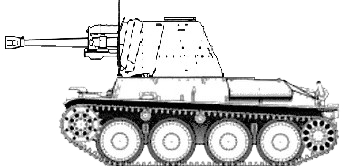
During the Second World War, in 1943 and 1944, 33 of the Romanian R35s were rebuilt with a Soviet 45 mm gun taken from captured T-26 tanks to improve their anti-tank capacity. The captured guns were refurbished at the Army Arsenal in Târgoviște while the new gun mounts containing the recoil mechanism were made at the Concordia Works in Ploiești. Their co-axial machine gun was also removed. The conversions were performed at Atelierele Leonida in Bucharest. They were renamed Vânătorul de care R35 and served until the end of the war.


- 110/110/156 HP
- 78/120/38 mm
- 110/110/156 HP
- 82/130/38 mm
- 125 hp
- 150 hp

In 1943, forty captured Soviet 76.2 mm field guns were in storage to rearm the T-38 tanks used by the Romanian Army. The tank destroyer would have resembled the German Marder III. Because the TACAM R-2 project was never completed, the project was cancelled after King Michael's Coup.
The TACAM T-38 was going to be built by removing the turret of the T-38 light tank and building a pedestal to mount an ex-Soviet 76.2 mm (3.00 in) Zis 3 field gun in its place. A three-sided fighting compartment was built to protect the gun and its crew. The fighting compartment was to be built using armor salvaged from captured Soviet tanks. These modifications would have taken place at Leonida Works in Bucharest. The TACAM R-2 tank destroyer production was halted in July 1944 because the gun was thought inadequate to face the new heavily armored IS-2 tanks being fielded by the Soviets. After King Michael's Coup, the TACAM T-38 project was completely abandoned.

- 110/110/156 HP
- 82/130/38 mm
- 80 hp
By December 1942 it was blatantly obvious that Romania had nothing capable of defeating the modern Soviet medium and heavy tanks and wasn't likely to get anything capable of doing so from the Germans anytime soon. Romania had a number of captured modern Soviet tanks and field guns and it was decided to convert them to tank destroyers on the model of the German Marder II. The T-60 light tank was chosen because Romanian industry could maintain it, not least because its engine was a license-built Dodge-Derotto-Fargo F.H.2 for which spares were available in both Romania and Germany. A captured Soviet 76.2 millimetres (3.00 in) M-1936 F-22 field gun was removed from its carriage and a new mount was fabricated to fit the gun to a turretless T-60. A fighting compartment was built using armor salvaged from captured Soviet tanks and the suspension was reinforced to handle its greater weight. Leonida finished the prototype on 19 January 1943.
A total of thirty-four were converted by Leonida in Bucharest by the end of 1943. Sixteen were assigned to the 61st Tacam Company which was assigned to the 1st Armored Regiment and eighteen were organized into the 62nd Tacam Company and assigned to the 2nd Armored Regiment. Despite these nominal assignments the TACAM T-60s were assigned as needed. The ad hoc Cantemir Armored Group was formed on 24 February 1944 to reinforce the defenses of Northern Transnistria from elements of the 1st Armored Division and included fourteen TACAM T-60s in two batteries. This was later returned to its parent 1st Armored Division and the tank destroyers fought with the division during the Soviet Jassy-Kishniev Offensive. Nothing is known about any action immediately after Romania's defection to the Allies in late August 1944 or in the defense of Romania during the following month, but it seems likely that all surviving vehicles were repossessed by the Soviets during October 1944.
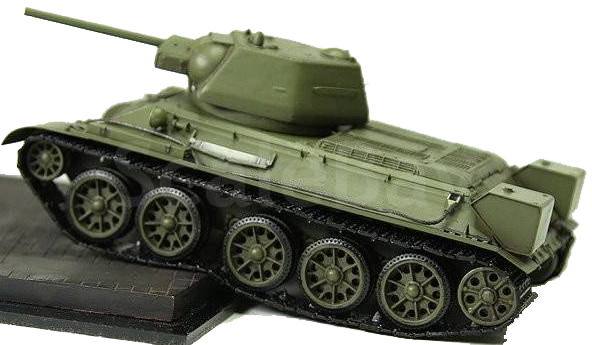
- 110/110/156 HP
- 86/102/38 mm
- 45/45/45 mm
- 500 hp
During the WW2 there were plans in Romania to produce the local version of T-34, which would be almost the same as the original tank, but this was not done. Notice that name R-34 is fictional, it just means "Romanian T-34".


- 110/110/156 HP
- 78/120/38 mm
- 110/110/175 HP
- 125/170/38 mm
- 125 hp

By December 1942 it was blatantly obvious that Romania's R-2 light tanks were no longer capable of standing up to Soviet medium tanks, but something had to be done to extend their service. It was decided to convert them to tank destroyers on the model of the German Marder II and Romania's own TACAM T-60, still in development. The turret was removed from one R-2 to serve as the prototype over the summer of 1943 to test the concept. A captured Soviet 76.2 millimetres (3.00 in) M-1936 F-22 field gun was removed from its carriage and a new mount was fabricated to fit the gun to the turretless R-2. A fighting compartment was built using armor salvaged from captured Soviet tanks. New Romanian and German gun sights were fitted to suit the new Romanian ammunition. Testing in late 1943 proved that the gun didn't overpower the chassis, but the gun was only effective against T-34s up to ranges of 500–600 metres (550–660 yd). Forty were planned to be converted by Leonida in Bucharest, but the process couldn't begin immediately because Germany hadn't yet delivered the tanks that were to replace the R-2 which allowed the F-22 gun to be exchanged for the more powerful ZiS-3 gun on the production models.
Leonida began work in late February 1944, and the first batch of twenty conversions was complete by the end of June. Production was halted then because the gun was thought inadequate to face the new heavily armored IS-2 tanks being fielded by the Soviets. Ten vehicles were organized into the 63rd TACAM Company in July 1944 and assigned to the 1st Armored Training Division. They didn't see combat until after Romania's defection to the Allies. A company of twelve was assigned to the Niculescu Detachment when it was rushed north at the beginning of September to defend the Transylvanian frontier against the Axis counterattack from Hungary. Four more were added when the Niculescu Detachment was absorbed into the ad hoc Armored Group on 29 September in preparation for attacks intended to clear Northern Transylvania. This was successful and the Armored Group was disbanded when the last Axis units were forced from Romanian territory on 25 October 1944. Twelve were assigned to the 2nd Armored Regiment when it was sent to the front Czechoslovakia in February 1945. The Soviets immediately seized most of the TACAM R-2s in exchange for a few captured German tanks, but two were reported as operational on 31 March and two were still on hand on 24 April. One of these was destroyed before 30 April and the other was damaged mopping up German units near Brno in May. None were reported with the remnants of the regiment when it returned to Bucharest on 14 May 1945.

- 240/240/295 HP
- 203/237/44 mm
- 125 hp
Proposals were made to rearm the TACAM R-2 to better counter the new heavily armored Soviet Iosif Stalin tanks. Proposals were made to up-gun the vehicle with either the Romanian-built 75 mm (3.0 in) Reşiţa Model 1943 anti-tank gun or the German 88 mm (3.5 in) gun, but nothing was done before Romania changed sides in August 1944.


- 250/250/330 HP
- 175/235/50 mm
- 250/250/330 HP
- 208/235/50 mm
- 500 hp
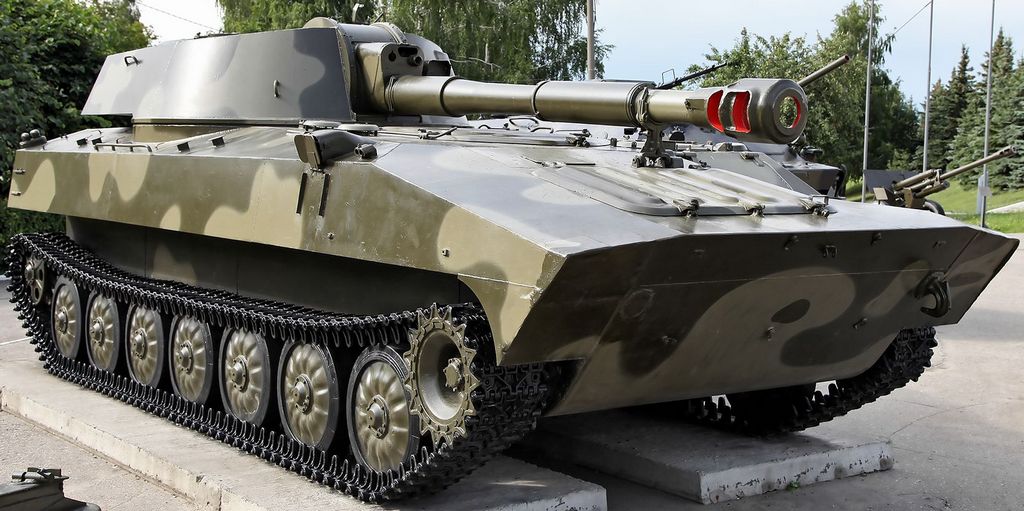
Romania received approximately 66 SU-100's from Czechoslovakia in 1955. They were allocated to the anti-tank division of the mechanized divisions and the anti-tank battery in the armored divisions. Tank hunters were used during the 1989 Romanian Revolution.


- 440/530/530 HP
- 255/200/68 mm
- HEAT/HE/HE
- 20 mm
- 240 hp
- 300 hp
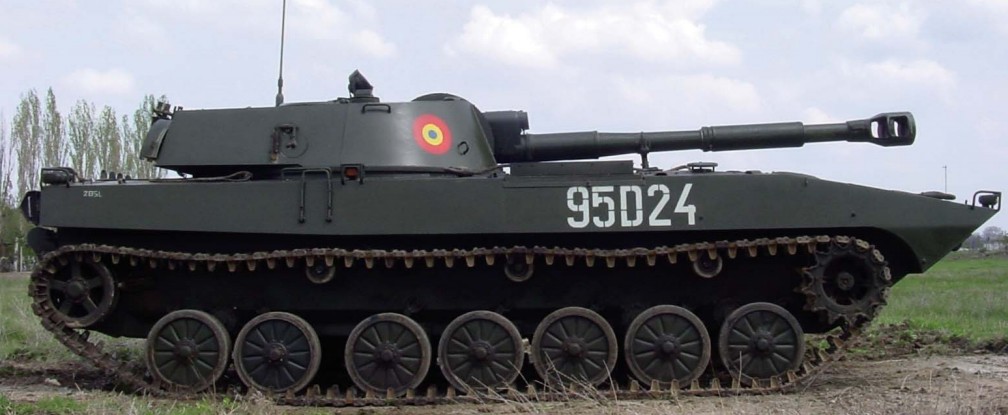
2S1 was developed in USSR between 60s and 70s, mass production was started in 1971. It was exported to many countries, while Bulgaria and Poland was also producing it.
Romania was one of the countries for export as well. A total of 48 2S1's were delivered, not counting Model 89 local versions.
Notice that this is an amphibious vehicle - that's why it has a special mark in the tree being currently unavailable for the game. But some sources say that such tanks will be introduced into game some time, so it will be possible.
It's gun is actually a howitzer, having HE and HESH rounds. As a TD 2S1 must get HESH rounds as basic type, and penetration would be a value based only on the balance. It's because the real penetration of HESH of this gun was 400-460 mm.

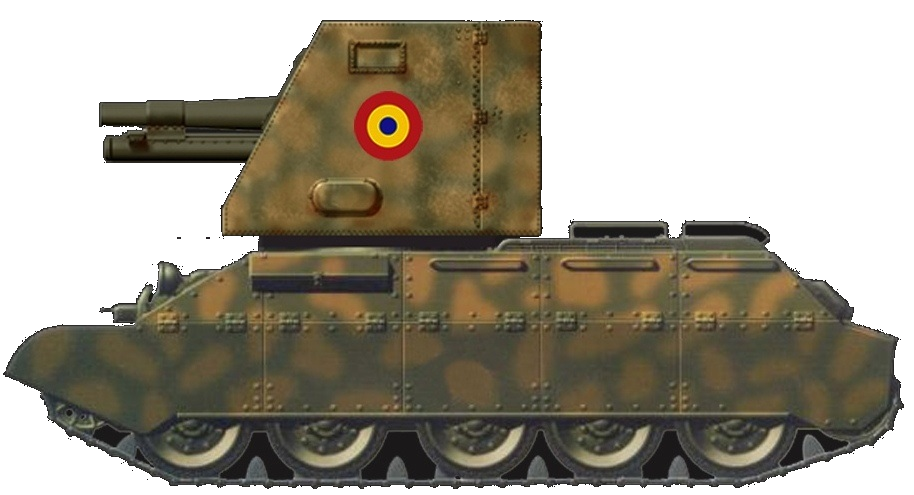
- 440/530/530 HP
- 255/200/68 mm
- HEAT/HE/HE
- 20 mm
- 360 hp

Model 89 was developed in 1980s as the modification of 2S1 specially for the Romanian Army. Mass production was started in 1989. 42 vehicles were made, but no one was exported. The main difference from 2S1 was the MLI-84 locally made chassis.
Notice that this is an amphibious vehicle - that's why it has a special mark in the tree being currently unavailable for the game. But some sources say that such tanks will be introduced into game some time, so it will be possible.
It's gun is actually a howitzer, having HE and HESH rounds. As a TD Model 89 must get HESH rounds as basic type, and penetration would be a value based only on the balance. It's because the real penetration of HESH of this gun was 400-460 mm.


- 320/320/420 HP
- 300/400/50 mm
- 200/?/? mm
- 360 hp
The TAA was an elusive Romanian project originating from the 1980’s that involved an “MLI” chassis and an unspecified 100 mm gun (or possibly 125mm 2A46 smoothbore). Until now, the vehicle was known as the “Tun Antitanc Autopropulsat model 1985”, “TAA-85”, or the “TAA md. 85” with the ‘model 1985/-85/md. 85’ part of the name likely a fabrication or misunderstanding. The TAA was designed specifically for anti-tank purposes with direct fire and from concealed positions. It also provided a unique crew and equipment layout which theoretically further protected the crew.
The history of the TAA is obscure. The earliest known mentioning of this vehicle was in 1978 when the Romanian Command of Artillery was authorized to figure out how many domestically produced artillery pieces and what type they were going to need. They decided that 1716 self-propelled 100mm anti-tank guns mounted on the “MLI” chassis (uncertain if they were referencing the MLI-84, a slightly longer BMP-1 clone) were going to be needed. This meant that the tank was developed sometime around 1978 to 1985 (or possibly earlier) until it was patented in September 1985. The tank was patented by Institute 111 from Bucharest, Romania for its unique crew and compartment layout. They were responsible for designs such as the TR-85-800. The designers who were credited were Buracu Mihail and Darvariu Paul. No other information is currently known about them.
The TAA never came into fruition likely due to it being unnecessary, costly, impractical, or Romania wasn’t ready to make a vehicle that complicated.

- 160/160/280 HP
- 126/167/43 mm
- 90/75/52 mm
- 90/75/52 mm
- 500 hp
- 580 hp
During the Second World War, the Romanian troops captured a small number of T-34 tanks, but they were only used for a short period due to the lack of spare parts. Most captured tanks were sent to Romania for testing and training.
In 1949, the Romanian Army replaced Panzer IV (called T-4 in Romania) and Panther (named T-5 Pantera) equipped with T-34 tanks manufactured in the USSR, Poland and Czechoslovakia. All German manufacturing tanks were shut down and scrapped until 1954. In the early 1960s, SPK-5 evacuation tractors built on the T-34 tank were also imported. After 1961 T-34 tanks were revitalized and upgraded. Most spare parts have begun to be manufactured in the country (electric starters, generators, accumulators, clutch discs, gearbox sprockets, skates, bolts, buckets, etc.). The tanks were sealed to cross water courses of a maximum depth of 5 meters, fitted with gyro-directional gears, 5-speed gearboxes and pre-heaters for engine starting in winter, additional engine filters to extend the service life of the and the Soviet radio stations 9 RS with modern stations RM-31-T (Czechoslovak manufacture) were replaced. Between 1960 and 1965, the T-34 tanks were adapted to use night-vision infrared rays. Tractors on the T-34 chassis were equipped with pulleys and hoists for removing damaged tanks.
In the mid-1980s a modernization of the T-34/85 tanks was proposed with the following components: laser telemetry, two-stroke stabilizer, anti-aircraft horse machine gun. 12.7 mm DShK, infrared Moonlight, cannula tube heat exchanger, rubber antitrust side aprons, fumigation grenades, optional bulldozer blade, T-55 tank engine, modernized track (metal-rubber joint), buckets the T-55 tank and modern dampers. Improvements have not been implemented, although a prototype has been built. Subsequently, some tanks were transformed into agricultural machinery under the SOL program following a referendum on the reduction of the number of armed forces.
In 1990, Romania had 1060 T-34 tanks. These were withdrawn from use in 1994 (although Steven Zaloga states that they were still in the army in 1996).
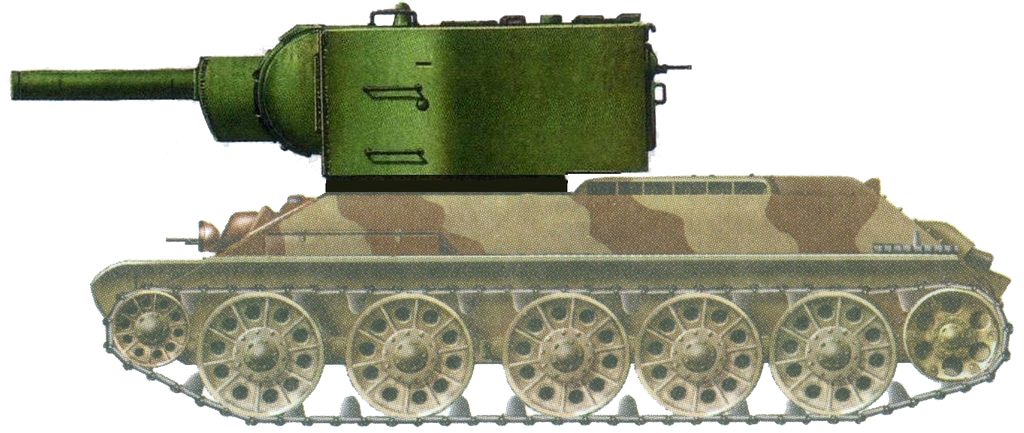

- 700/700/910 HP
- 120/180/86 mm
- 500 hp

Two T-34s were captured by Romania from the Soviets. One weighing 26 tons and the other weighing 33 tons (possibly referring to the T-34E STZ variant). It was proposed that an unnamed 120 mm (or 122 mm) and 150 mm gun were to be mounted on a different turret on the two T-34s. The proposal was later scrapped due to Romania’s inability to produce the necessary parts to handle the recoil of these large guns.

Notice that V-2R engine is unhistorical, but can replace V-55 to reduce the mobility due to balance

- 250/250/330 HP
- 172/210/50 mm
- 320/160/65 mm
- 520 hp
- 580 hp
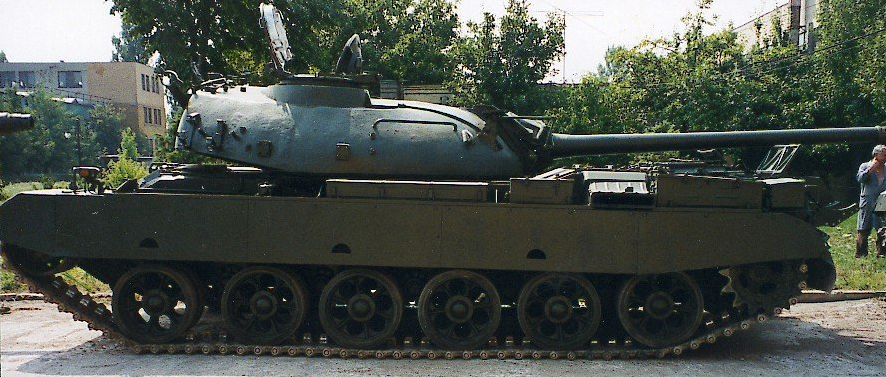
The “TR” stands for “Tank Romanesc”. The program started in 1974, ended on 1980 when the TR-77 entered in service. The “77” stands for the year of introduction, and “580” was related to the engine which was eventually chosen instead for production. Indeed, negotiation began with West Germany for the delivery of a license for the local manufacture of the desired 800 hp diesel, but the West German attitude towards democracy prevented any prolongated collaborations. Work on the 800 hp version, however, was pursued and would lead ultimately to the TR-85.
Work on the first prototype was conducted at the “Central repair combat equipment” of Mizil from Mizil Mechanical Plant in 1974. The first three zero-series were completed in mid-1976. In October 1976, the first production vehicles left the factory, for further testing which lasted about six months. By late spring 1977, production moved to the larger Marsa Mechanical Plant, where the actual, entire Romanian tank production takes place nowadays. Investments inMarchh 1976 for this plant were over three billion lei, representing almost 80% of the total planned investment for the TR-77 program. In the spring of 1978 for political reasons, all manufacturing and training specialists, in Sepia were transferred to Bucharest, where a new factory was set up. The new tank Factory was established in 1978 under Decree No. 514/17.12.1978 as the Special Heavy Machinery Factory (FMGS) in 23 August. Investment however was discontinued. The first serie TR-77s however first participated -even before being assigned to military units- in a military parade in Bucharest on the occasion of the Romanian National Day (august, 23). Tests were performed in specialized military polygons until last October 1979 with the first 11 tanks delivered. After the further development the tank received a name TR-77-580 (or TR-580).


- 250/250/330 HP
- 198/250/50 mm
- 320/320/420 HP
- 205/300/50 mm
- 340/160/65 mm
- 340/160/65 mm
- 580 hp

Since February 1980 further tests with the new 25 tanks produced in 1980 were made at the Mizil and Jegălia Mechanical Plant, in Calarasi. A final order was placed for 210 tanks and 100 sets of parts per year. By the Decree 474/12.26.1983, technical and organizational measures were intended to increase production capacity to 500 tanks per year. Totally about 400 TR-77-580 were built between 1979 and 1985.

Notice that it usually has sideskirts (that aren't shown on this photo)

- 320/320/420 HP
- 250/310/50 mm
- 340/160/65 mm
- 830 hp
While the TR-77 was developed, from 1974 the Romanian engineers continued work on a reverse engineered version of the 800-horsepower MTU Leopard 1 engine and transmission. The work came to a halt, as the engineers lacked the experience to reverse engineer such complex designs. By 1976 however, Institutul Naţional de Motoare Termice (National institute for thermal motors) stated that it could design an engine based on the Leopard 1 diesel engine model using available technology and solutions. Also, the hydromechanic transmission was designed by the ICSITEM research institute from Bucharest based on an available model and produced by Hidromecanica Braşov factory, thus completing the T-block powerpack. The engine and transmission were designed between 1974 and 1982, using foreign technology.[1] Ion Mihai Pacepa, a two-star Romanian Securitate general and the highest-ranking intelligence official ever to have defected from the former Eastern Bloc, later asserted in his book Red Horizons: Chronicles of a Communist Spy Chief that the engine technology was obtained using spy rings and confidential assistance from the Federal Republic of Germany.
The new tank was officially known as the TR-85-800 (Tanc Românesc model 1985 cu motor de 800cp - Romanian Tank model 1985 with 800 hp engine) and was designed between 1978 and 1986. The engine had a maximum output of 830 horse power. The suspension was redesigned and the turret, while bearing a strong resemblance to the T-55 series, was actually different.
The TR-85 tank was produced between 1986 and 1990 at rate of approximately 100 tanks per year. The TR-85 tank was soon found to be mechanically unreliable. Teething problems included high fuel and oil consumption, engine and transmission problems and chronic oil leakage. Furthermore, the Ciclop fire control system was unreliable because of the poor quality of electronics. The laser rangefinder was not integrated with the daylight aiming system and only a limited number of corrections could be inserted in the ballistic fire-control computer. Problems were made worse when Nicolae Ceaușescu decided to cancel in July 1982 all imports of special equipment for the arms industry. At one point, Ceaușescu threatened to stop tank production altogether because of the poor manufacturing quality. The initial teething problems were not corrected until after the fall of communism in Romania when the Romanian engineers used foreign parts to improve TR-85's reliability. The program of modernization was started soon (the new tank was designated TR-85M1).